April Update
This month: flowers and home improvements. Plus some crazy projects.
❦❦❦
Increasingly, yet moreso in April than earlier, I am making fake excuses to spend more time walking outdoors. The excuses range from “getting groceries” (I could bike, but I don’t) to “getting some fresh air” (after working two hours on the yard already). The true motivation, as I reflected on a few days ago, is more likely a growing liking for my neighborhood; something that I currently call a “feeling of spatial belonging”.
Seasonally appropriately, my walks were rewarded with abundant tree blossoms. Including those from a cherry tree in front of my home.
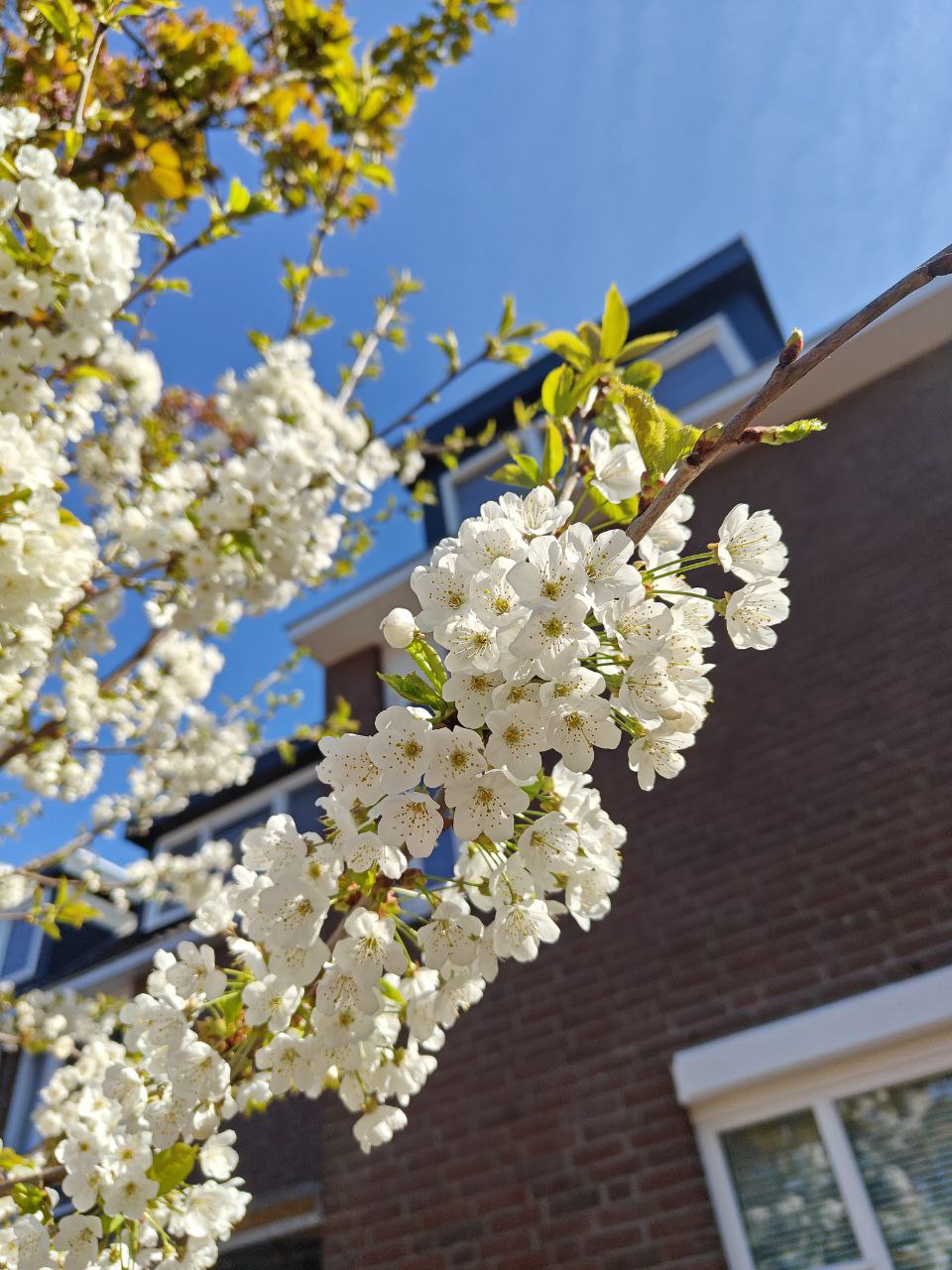
Season-appropriate flowers.
Sadly, our spring was also abnormally dry. After resisting the winter so far, I lost a few plants to drought in March and April, and had to water the rest to save them. In spring! This is unheard of in the Netherlands. I am slightly worried for the summer to come.
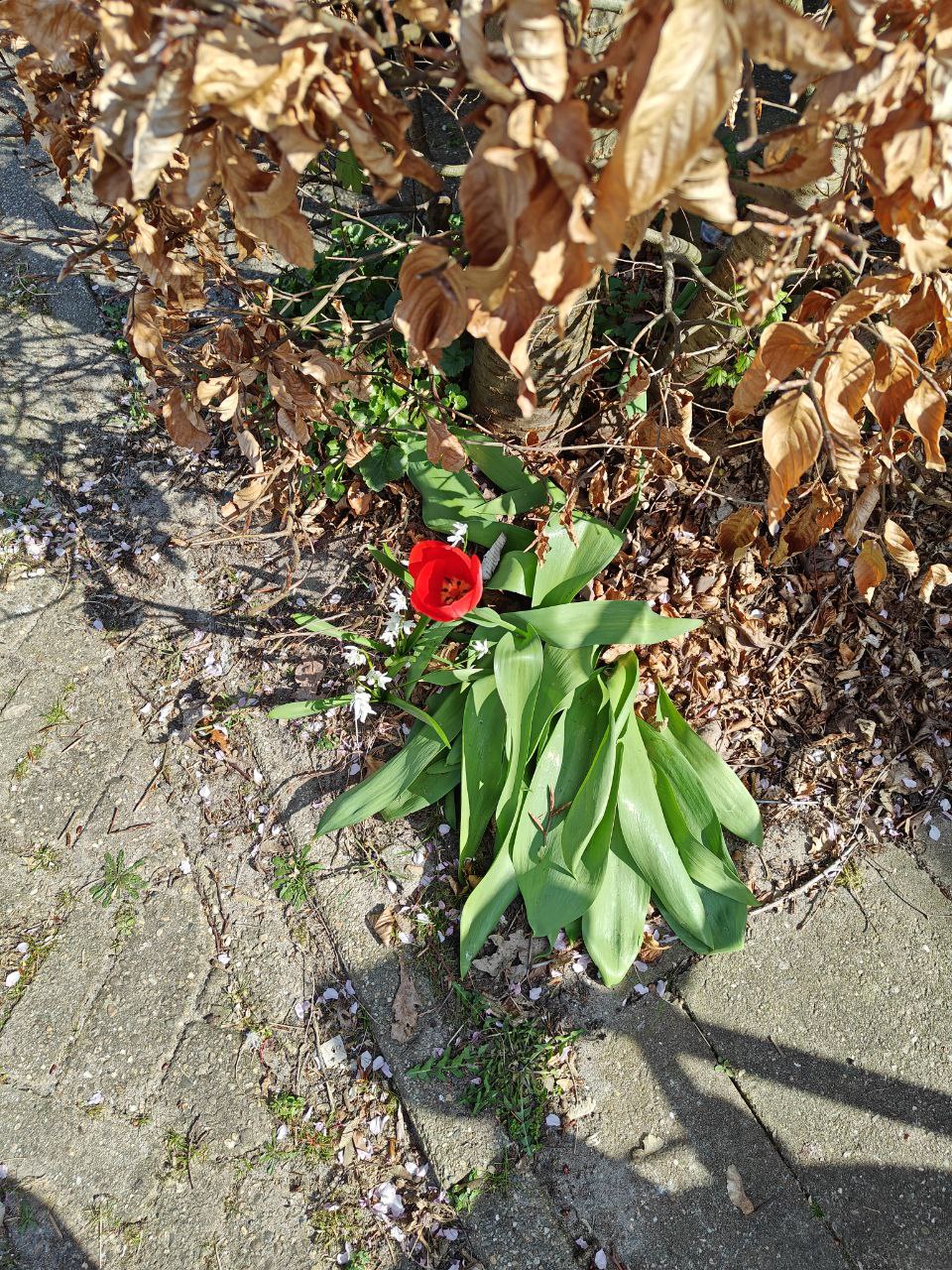
Usually, these bulbs give me 8-10 flowers. The drought limited the bloom this year.
❦❦❦
Another feature of belonging is social routine. To the “trampoline dodgeball” already mentioned last month, I have added dome semi-regular time at a café on Sunday nights, with a group I also found via Meetup. They too seem to be “misfits in search of spatial belonging” and I welcome the shared experience.
There were also incidental meetups, in particular two organized by a local startup in Amsterdam around their new “friend-making app” and another organized by a local chapter of the Offline club. This latter experience (where everyone spends three hours together with their phones locked away at the door) was surprisingly pleasant: I was positively intrigued at the ambiguity of not knowing whether their regular members were backward Luddites or enlightened visionaries. I might go again.
There were also a couple of quality gatherings, with a highlight at Easter Sunday where a group of friends entertained each other culinarily and secularily.
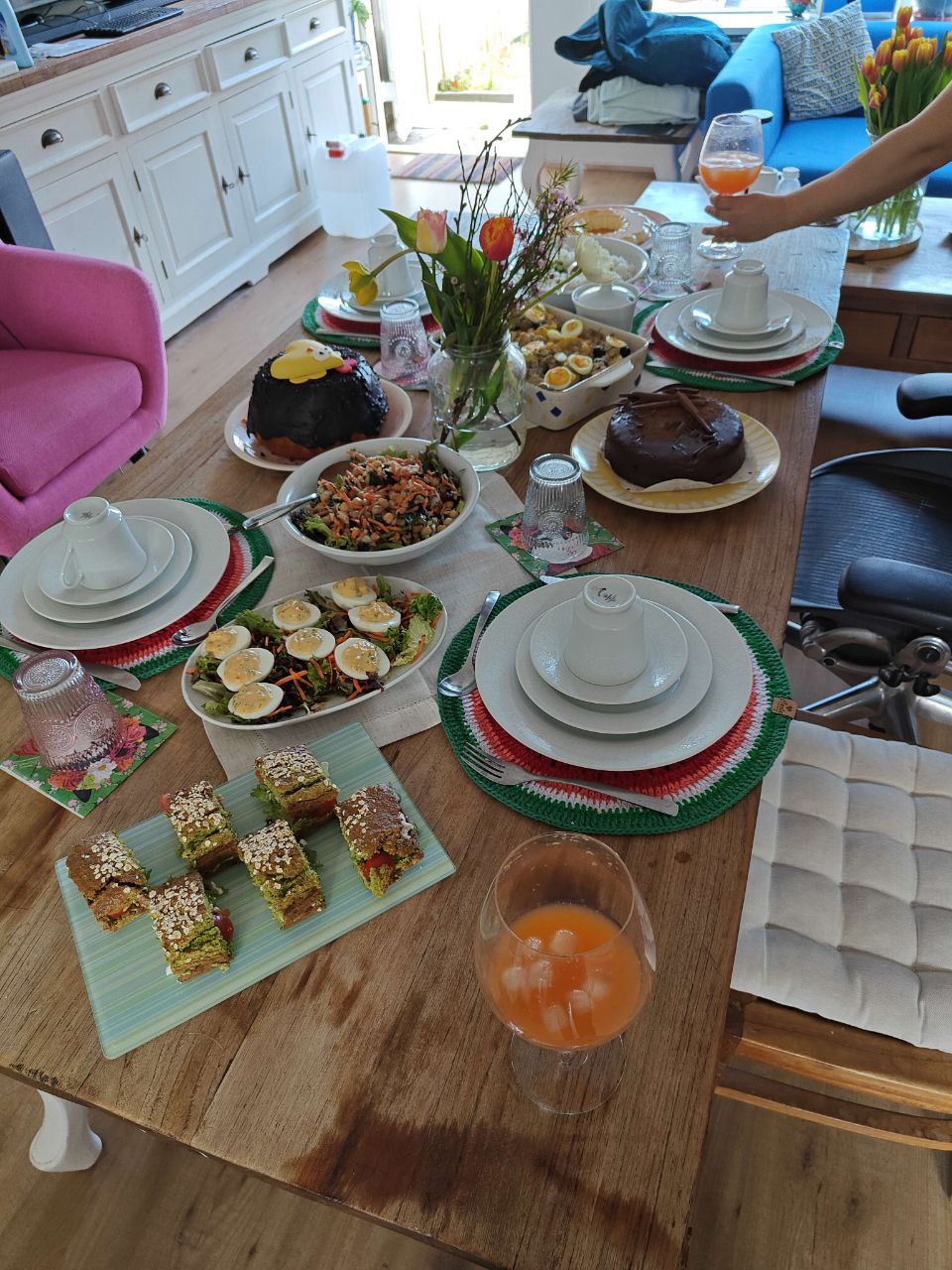
Also season-appropriate. Not flowers though.
❦❦❦
April was also the anniversary month of moving back into my home. Before I moved back last year, I was lamenting with a friend that I had not accomplished all that I had desired, and that I feared the prospect of residing in the midst of unfinished projects. He had recommended I make a plan and a timeline, and commit to their execution, to help with peace of mind. It worked! But that timeline was also constrained: 12 months.
Many small projects were completed through the year. I saved the three largest for the end. One of them was easy but low priority, so I procrastinated until I felt external pressure: furnishing the guest room happened just before I hosted my first guests.
Another was season-bound: it had to wait until the end of winter. As recommended by my architect two years ago, I covered the roof of my living room with sedum, low-growth succulents that provide extra insulation against both noise and heat.

Much dark, very boring.

Good spot to lounge in the morning.
The last project was arranging a reading corner. This could not be hurried, as it required me to first get a feel of living in the space, then also to complete the project above which sets the view from the window. Within the last month, I gathered the last remaining items including the proverbial rug that “ties everything together.” It truly does!
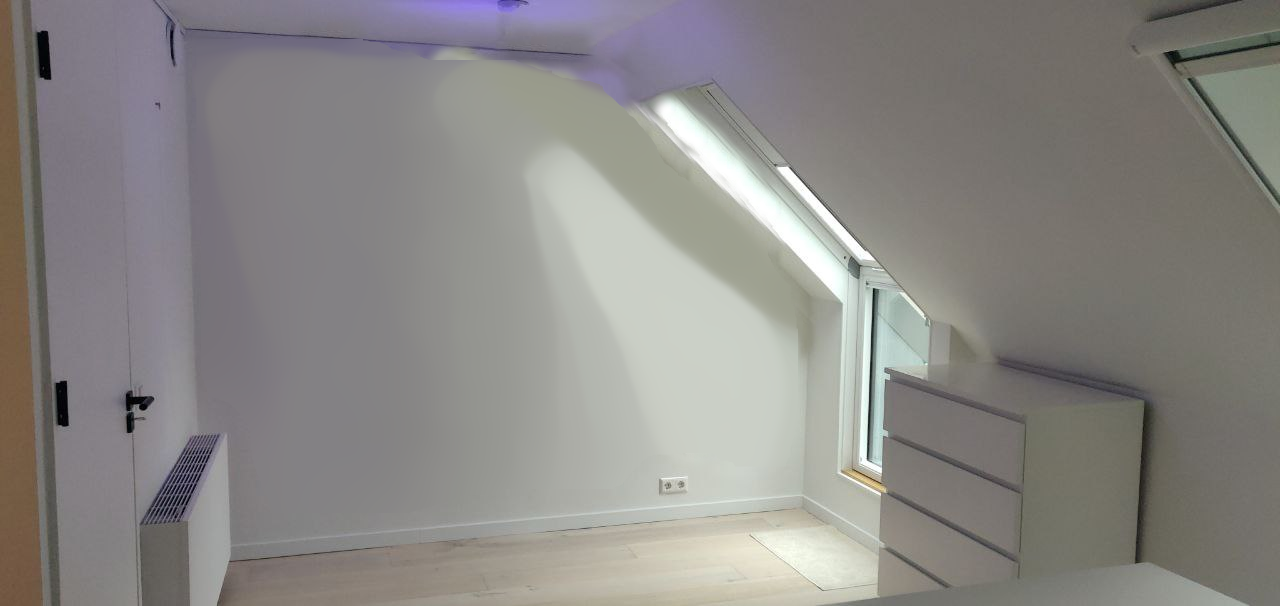
Much white, very empty. 🐶
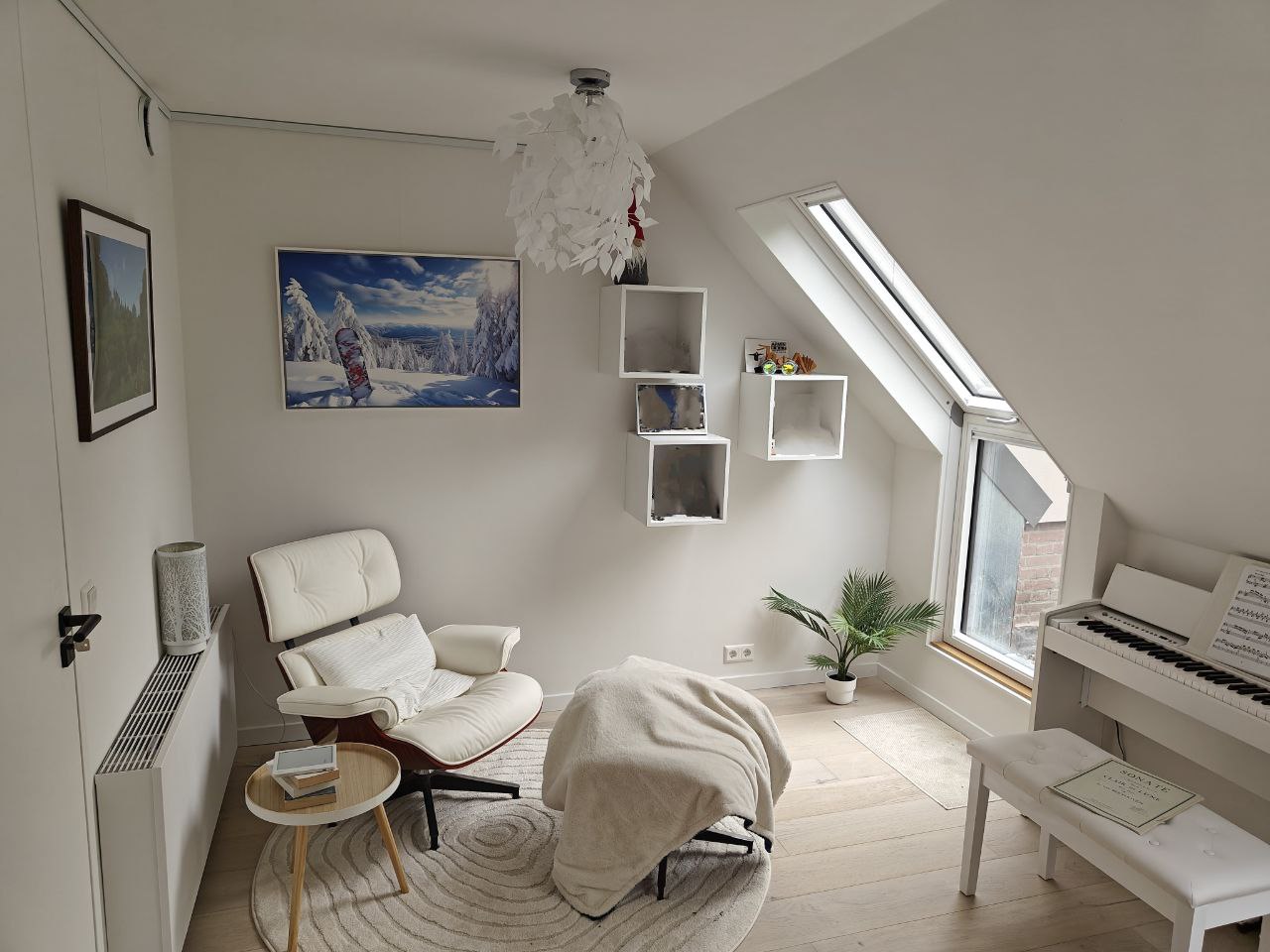
Quiet space for lazy afternoons
More projects will follow, but they belong to a future that wasn’t yet envisioned two years ago. As of this month, I consider this four-year project finally completed.
❦❦❦
On the health front, sleep quality is still irregular, but I feel I am slowly claiming the upper hand, now averaging at least 2-3 good nights per week. My elbow pain has thankfully subsided, but my right shoulder has decided to lock up again on most days. This pain yo-yo is tiring me, and I have started to seriously long for just a day of homeostasis.
The reason behind my elbow pain flares last month, as I found out, was an inappropriate balance between my time reading and my time doing other things with those joints. Besides spending more time outdoors and moving generally, I also have reduced my amount of reading, temporarily, until I feel sufficiently healed.
It did not stop me from completing TJ Klune’s Green Creek series, though (minus books 3.5 and 3.6). This ended as a much more pleasant reading experience overall than it started last month. The author definitely improved over the years.
❦❦❦
Here are the important short-form (and not-so-short-form) reads for this month.
In Intentionally Making Close Friends, Neel Nanda shares their own best practices and routines for growing friendships. Some of this overlaps with my own experience; some I find distasteful, and some I am likely to learn from. I would say this write-up is a very good starting point for anyone who wonders why it is so hard to make friends nowadays and what to do about it.
In Hyperlegibility — Trading Secrets for Attention, Packy McCormick writes about a complex, nuanced model of modern reality. It would be hard and imprudent for me to try and contain it in just a few words; you might want to read it to make your own opinions. Nevertheless, I found it an eye opener: that the cacophony of signals from individual (= not corporate) voices is being processed thoroughly, without us realizing it’s happening, by the new generation. And that it might turn into good things. This write-up also gave me a word to talk about one of my projects (more on this below).
❦❦❦
On a more practical note, Manuel Kießling shared his experience of introducing LLM programming assistants to his team in Senior Developer Skills in the AI Age: Leveraging Experience for Better Results. As written about by others before, Manuel found out that the quality of the output increases in proportion to that of the input (in turn justifying why senior staff is still pretty much a requirement to operate the new tech effectively). The new thought I found intriguing is that he also creates some scaffolding prior to asking stuff to the machine, so that the machine’s response “grows” onto his scaffolding and follows his preferred structure. Maybe that is the solution we need for unwanted metaphorical vines growing onto our metaphorical economic walls? Judicious gardening, with both guides and adequate trimming.
On the flip side, we should continue to be vigilant about what we can legitimately expect from the new technology. In What can LLMs never do, Rohit Krishnan draws the boundaries of the class of problems transformer-based LLMs could ever solve. In The Command of Language, David Cole reminds us that it is our incomplete understanding of what “language” is that confuses us into believing LLM generate real experience and meaning. (I will gladly admit that I too would have fallen into this pitfall if I hadn’t been inoculated beforehand by my study of Ludwig Wittgenstein’s work.)
Perhaps more importantly, Edward Zitron also shakes his fists at the clouds in Reality Check, reminding us that we are sacrificing a non-trivial amount of real-world resources to what might remain, in the end, an unproven pipe dream.
❦❦❦
On a not entirely unrelated note, Albert Lloreta wrote about some ideas I had been musing for the last few years: in A Strange Stain in the Sky: How Silicon Valley Is Preparing A Coup Against Democracy, the author identifies how some unscrupulous people with money are organizing online communities whose ostentatious goal is to undermine real-world geography-based government.
This connects to Adam Becker’s recent book, “More Everything Forever”, also recently reviewed by Jennifer Szalai, through whom I learned of it: Go to Mars, Never Die and Other Big Tech Pipe Dreams (archive). In there, the author posits a theory that venture capital investors in Silicon Valley are currently in a sort of metaphysical flight forward. My limited view on this is my own theory that they are betting their proverbial house on a hope that “AI” will solve some real and serious problems but without plausible evidence this will happen. Also, that they are trying to hedge their bets by also creating power structures (such as those discussed above) to make it more likely for money to continue to flow in their preferred direction even if/when the bet doesn’t work out.
Even with historical hindsight, it is still unclear whether the inordinate amounts of money and resources spent towards the space race in the 1960s (including sending people on the Moon!) resulted in a net benefit or loss for humanity. I believe it will cost us at least 50 more years before we understand the true impact of what we are currently investing into. Most of us will also be dead before then.
This raises a fundamental yet critical question: how to guide our choices responsibly, if we will not be there to carry the weight of consequences?
❦❦❦
This was a convenient segue into the last topic I’d like to share today. Before I do so, however, let me preface with a reminder of our theory of overlapping narratives: that the same phenomenon can be the natural outcome of multiple unrelated stories.
In short, I am going to try and found a new religion.
Yes! I am serious. Kinda.
For sure, I agree this sounds preposterous! And perhaps that is one of the overlapping narratives: I like the whimsical, and I like doing unexpected things, and both likes combined into one spark for me to start actually working on this project, back at the beginning of March.
Another overlapping narrative stems from my fascination for beliefs systems. This special interest started a bit more than twelve years ago, when I slowly realized that humans coalesce the chaos of the unexplainable into beliefs in order to give it meaning. For example, instead of cowering in horror at the realization that no rational thought can ever guarantee us that the sun will rise tomorrow (Hume, 1739), we simply choose to believe it will. Beliefs systems, just as ethical frameworks (which are really a flavor of belief systems), are really just very complicated stories that people tell each other that tie all the unexplainable things together, in a way that makes us feel better. To me, this raised a few creative question: what exactly are the components of a belief system that make it “work”? What topics should it cover to be worth believing in? What topics should be left out? In the years that followed, I imagined various directions to answer these questions but it took me many more to make my answers somewhat coherent.
Yet another overlapping narrative is my own lived experience of hyperlegibility: I write stuff, just as much to clarify my own thoughts as it is to explain or show stuff to others. It was thus only a matter of time before I would end up writing about my own ethical framework. After exploring many topics in writing that are true “because” they derive rationally from other things I could learn or observe, I felt that time had come to start writing about stuff I believe is true “because” I simply believe it’s true. Writing about stuff that is “true because of something else” was really a way of shielding myself away from criticism. Starting to write about stuff and saying “this is my truth” makes me more directly vulnerable to criticism. Maybe that is a good thing.
The last overlapping narrative I can share today is my experience as a mentor and coach: I am repeatedly observing with my clients a combined longing for purpose and meaning, together with an overall dread at the pressure they feel to make well-informed personal decisions about everything. In short, even smart people don’t really want to rationally think about everything! Not even about the boundary between moral right and wrong. In most cases, it is because they are too busy. In some cases, it is because they are overwhelmed and/or tired. In any case, I am feeling strong demand for a believable, high-level framework that helps people make the right decisions on a day-to-day basis without thinking too much. So I would like to work on that.
❦❦❦
Anyway, what would this even look like?
What I would like to go for is a belief system with 1) an unusual yet memorable and metaphysically relevant origin story 2) a founding moral/ethical framework with a focus on modern society struggles and 3) regular practices to help people feel/become aligned with the system. I don’t like religious castes so I won’t mint priests; and I don’t completely disagree with existing religions so I’ll integrate with them surgically.
For now, I have already written much of what I want to push out into something that looks & feels like a “founding text”, with mytho-poetic verses and everything, which you can find online already. I did use a combination of LLMs to help me style the text, but the guiding principles and meaning are mine and I tweaked the output heavily to emphasize the bits that matter to me. Two next steps I might consider investing into (also, based on feedback from friends) are a bundle of short stories, to make the system more relatable, and a companion web app, to make online sharing of this new framework easier.
It is still unclear how much and how long I will work on this particular project. I have not time-boxed it yet. But does it matter? For now, it is still fun! In just a month, I learned a bunch of new tech skills; I learned about marketing and online collaborative spaces; I also learned a bunch about justice and government systems, religious history, economics and creative writing.
And perhaps more unexpectedly: ever since I wrote my founding text, I am finding myself referring to it in everyday life. In moments of uncertainty, indecision or boredom, I ask myself: what would be the “aligned” thing to do here and now? And more often than not, it guides me towards doing something I feel proud of afterwards. That also feels like a very desirable outcome.
❦❦❦
To close, let us consider this uplifting thought exercise:

Evidence-based policy-making in Florida.
Something important is to be learned here.
On the one hand, for this sign to exist, something actually serious and distasteful happened; law enforcement was involved, and a lawmaker—or at the very least, policymaker—was tasked very seriously to both remind us of this mistake and to prevent it from happening again.
On the other hand, there is something intemporally humorous, at face value, about this sign. Its existence will provide lightweight and shameless joy for generations to come. I personally find it unlikely the presence of a sign will prevent new violations through fears of reprisal; however, I trust it will do so by making people feel that acting so would be forever laughable and preposterous.
This, dear reader, is the type of memorial I predict and hope we will set up in history books about the events of 2024-2025.
❦❦❦
References:
- The Offline Club
- Wikipedia - Sedum
- Neel Nanda - Intentionally Making Close Friends
- Packy McCormick - Hyperlegibility — Trading Secrets for Attention
- Manuel Kießling - Senior Developer Skills in the AI Age: Leveraging Experience for Better Results
- Rohit Krischnan - What can LLMs never do?
- David Cole - The Command of Language
- Edward Zitron - Reality Check
- Albert Lloreta - A Strange Stain in the Sky: How Silicon Valley Is Preparing A Coup Against Democracy
- Jennifer Szalai - Go to Mars, Never Die and Other Big Tech Pipe Dreams (archive)
- Quintism - a philosophy of mending